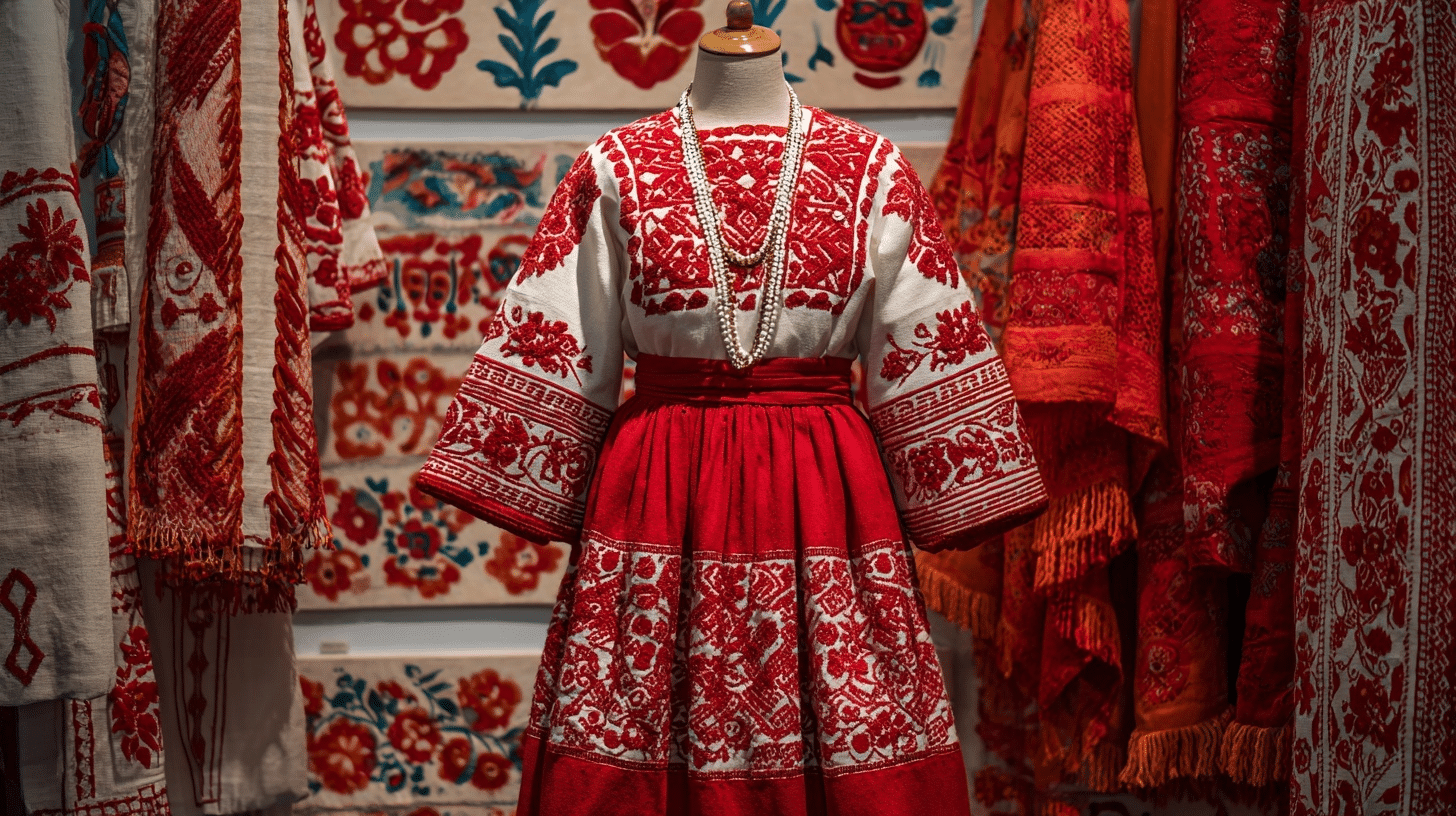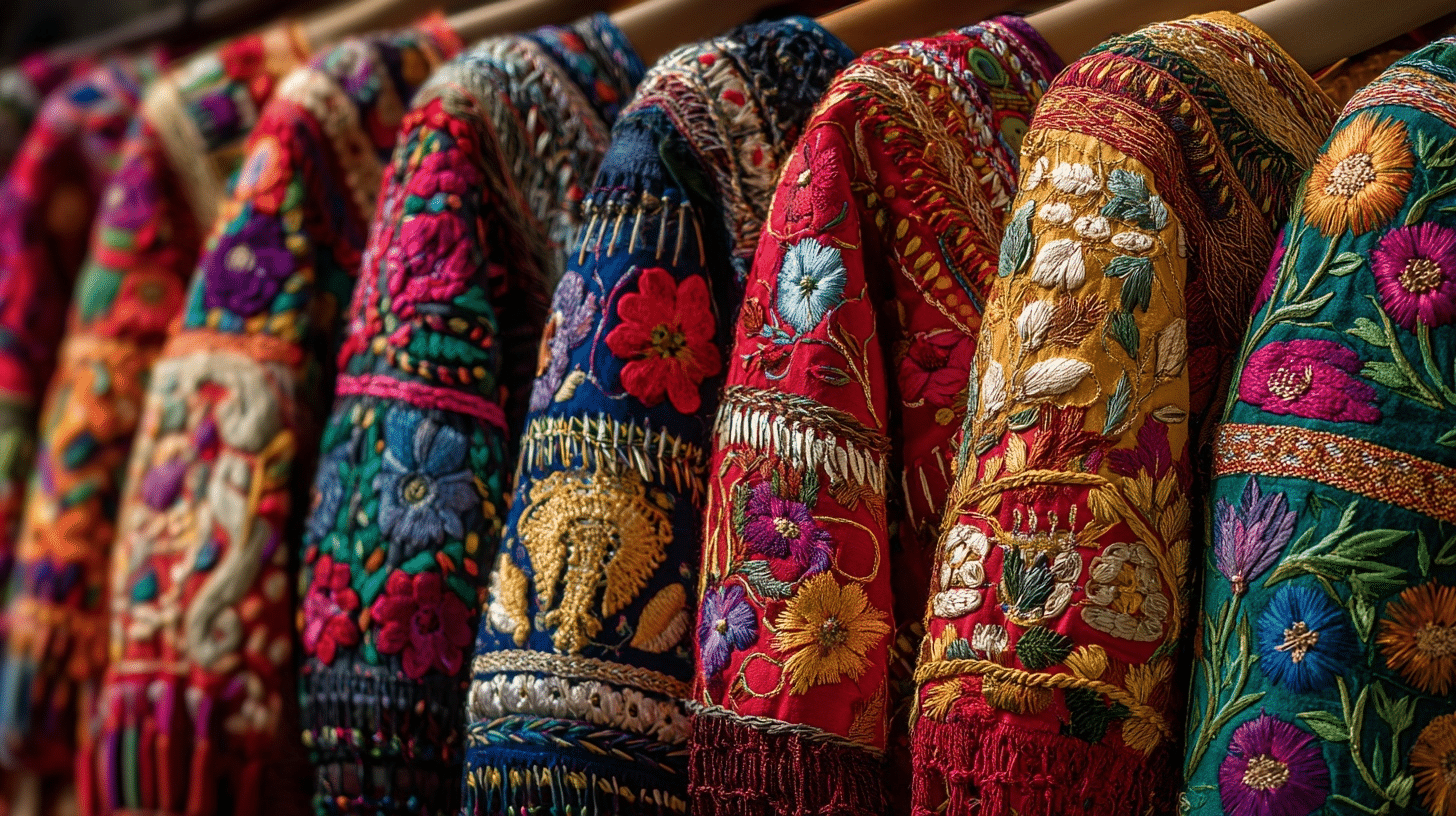Have you ever wondered why your grandmother’s traditional folklore dresses had those specific zigzag patterns? Or why certain colors keep showing up in folk costumes around the world?
I used to think these designs were merely decorative. Boy, was I wrong!
Every stitch, every shade, and every swirl tells a story. These aren’t just fashion choices from centuries past. They’re secret codes woven into fabric.
Let’s dig in!
Meaning in Folklore Outfits
Think of folklore outfits as walking billboards from the past. Every thread had a purpose beyond looking good.
Back in the day, your clothes did the talking before you even opened your mouth.
Folklore-style clothing guides reveal that a single glance at someone’s outfit could reveal their age, wealth, relationship status, and even their hometown.
These garments served as identity cards in fabric form. Young unmarried women wore different styles from married mothers.
Wealthy families showcased their wealth with intricate embroidery and high-quality materials. Even your profession might be reflected in specific design elements.
But it wasn’t just about social status. Many outfits also carried spiritual significance. People believed certain symbols could protect them from harm or bring prosperity to their families.
Mothers would carefully select patterns for their children’s clothes, hoping to shield them from misfortune.
The meanings weren’t random either. They developed over generations, passed down through families like precious heirlooms.
Colors in Folklore Outfits

Colors weren’t chosen just because they looked nice together. Each shade carried deep cultural weight and specific messages.
Red: The Color of Life and Protection
Red dominated folklore outfits across many cultures. This bold color represented life force, fertility, and protection from evil spirits.
Brides often wore red to be blessed with a fruitful marriage, while children’s clothes featured red accents to keep them safe.
White: Purity and New Beginnings
White symbolized innocence, purity, and fresh starts. Young unmarried women frequently wore white elements to signal their availability for marriage.
It also appeared in ceremonial garments for religious occasions and coming-of-age rituals.
Blue: Wisdom and Heavenly Connection
Blue connected the wearer to divine wisdom and heavenly protection. Many cultures associated this color with truth, loyalty, and spiritual insight.
Religious leaders and wise elders often incorporated blue into their traditional attire.
Green: Nature’s Blessing
Green represented fertility, growth, and connection to nature. Farmers and those dependent on good harvests favored green accents. It promised abundant crops and healthy livestock for the coming seasons.
Patterns in Folklore Outfits

Patterns were like a secret language sewn into every garment. Each design choice communicated specific meanings to those who knew how to read them.
| Pattern Type | Meaning | Common Uses |
|---|---|---|
| Geometric Shapes | Protection from evil, spiritual balance | Borders, sleeve decorations |
| Floral Motifs | Fertility, beauty, growth | Women’s dresses, aprons |
| Animal Designs | Strength, courage, specific traits | Men’s shirts, ceremonial wear |
| Zigzag Lines | Lightning, divine power | Protective garments, children’s clothes |
| Circles and Spirals | Life cycles, eternity | Wedding dresses, religious robes |
| Cross Patterns | Faith, four directions | Sacred ceremonies, burial clothes |
The placement of these patterns mattered just as much as the designs themselves. Protective symbols appeared near vulnerable areas, such as the heart, throat, and wrists.
Decorative borders often lined hems and cuffs, creating magical barriers around the wearer.
Skilled artisans spent years learning these symbolic languages.
They understood which combinations worked together and which might clash or cancel each other out.
Conclusion
Folklore outfits were way more than pretty clothes!
These traditional garments remind us that our ancestors were incredibly thoughtful about every aspect of their lives.
They didn’t just throw on whatever looked good. Instead, they carefully chose each element to tell their story, protect their loved ones, and honor their heritage.
Next time you see traditional costumes at a festival or museum, take a closer look. Those colors, patterns, and symbols are whispering secrets from generations past.


